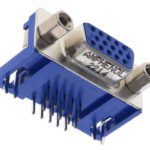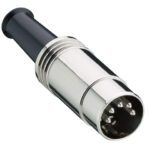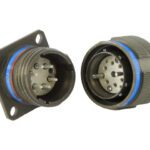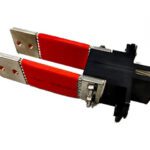What are IC Test Sockets?
Meet the Connector: IC Test Sockets
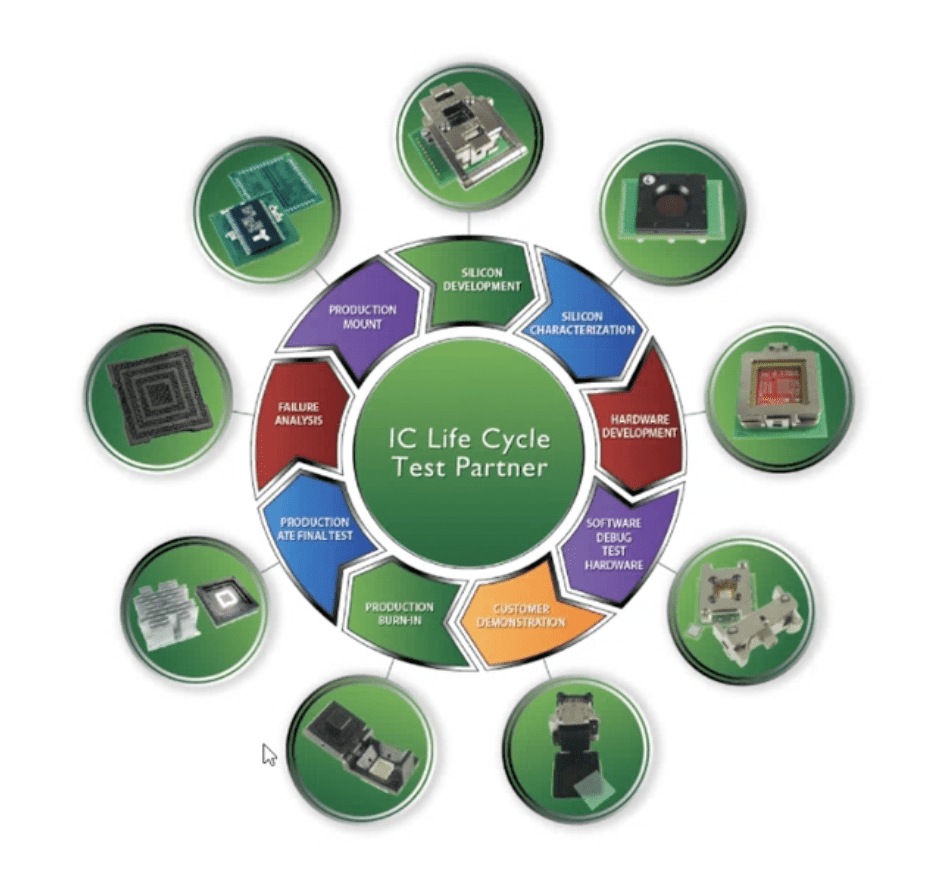
Courtesy of Ironwood Electronics
IC test sockets are electromechanical interfaces that have evolved to meet the needs of the booming semiconductor industry. They are used initially to perfect the IC design and later to weed out faulty circuits, all to ensure that the ICs in the final product will perform as intended.
In nearly every industry and throughout daily life, we rely on electronic devices and the ICs (integrated circuits) that drive them. ICs are tested at every stage of development, from design to manufacture, to make sure they will work in the devices they are designed for and under the environmental conditions they will likely (or possibly) encounter. Because it is impractical to create a permanent (soldered) connection with devices that are being tested, test sockets enable a semi-permanent but secure connection. If a circuit needs to be replaced for any reason during testing, it can simply be removed while the board and the remaining components are preserved.
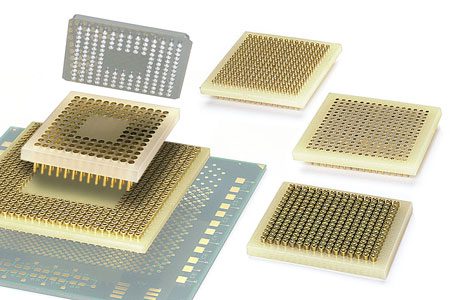
Mill-Max’s BGA Socket/Adapter Systems are used for both socketing BGA devices and interconnecting circuit boards. Systems are available to fit 1mm, .050″, and .8mm grid footprints.
IC Test Socket Design
Typically, a test socket consists of a frame and an interposer (also called a contactor). It may have a lid that is secured with screws or a lever to create the compression necessary to establish the connection. The interposer acts as the bridge between the device and the PCB, transmitting the signal between the two. Interposers are either spring pins or elastomers.
Elastomers are the higher performance contactor from a signal and power integrity standpoint. Elastomers also tend to be more repeatable (they produce consistent results) and can accommodate larger devices as long as the co-planarity is within elastomer compliance range. They are much shorter than spring pins. The drawback of elastomers is that they are less mechanically robust. They are typically used in the early testing stages that require high performance and fewer mating cycles.
Spring pins have a longer distance between the device and the PCB than elastomers. They have lower signal and power performance, but they are quite robust. Spring pins are used for later testing stages that require high mating cycles, given the volume being tested, and low performance requirements.
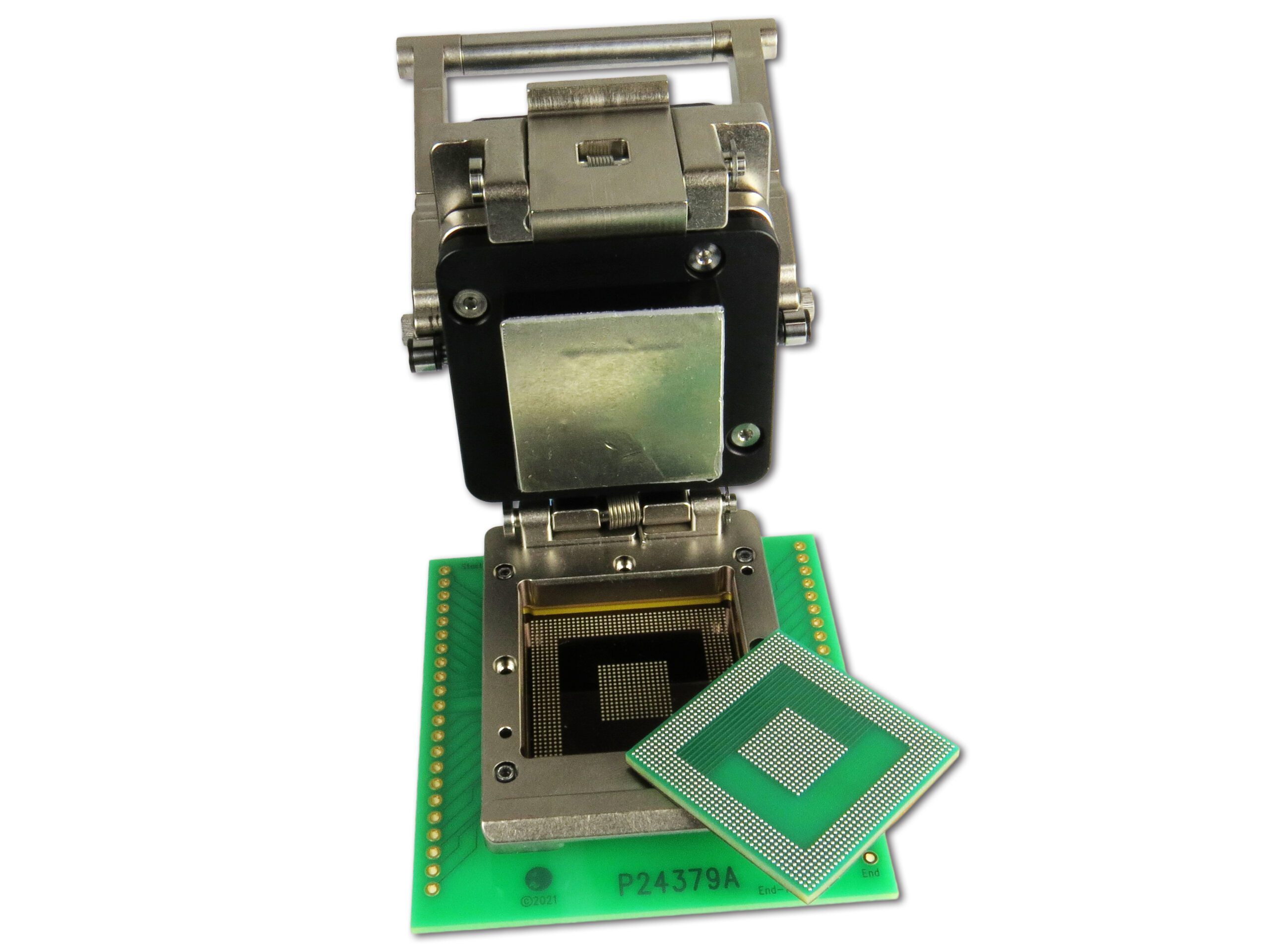
BGA socket from Ironwood Electronics
Early Testing Stages
The first line of testing, referred to as characterization or benchtop testing, is for R&D and verification that the IC works. During these early stages, performance baselines are established and tested against. ICs are tested for all the conditions they will have to perform in, such as high or low temperatures and extreme temperature changes, humidity and moisture, and corrosive environments. They are also tested for compatibility with software and other components.
Testing is done manually on as few as a few hundred ICs. Since the focus at this point is performance, the IC will go through multiple insertions until it achieves the desired characteristics.
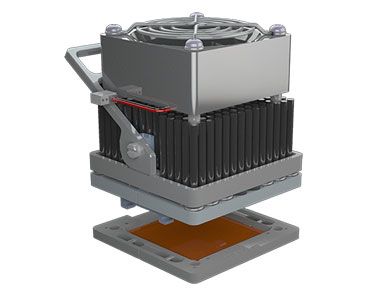
Amphenol’s patented solderless compression mount contact technology makes cost-effective and electrically robust socket solutions that offer high performance. With designs supporting pitches down to 0.4mm and speeds up to 40GHz, the SK series sockets are being used in cutting-edge BGA, LGA, and other small form factor IC applications.
Final Testing Stages
Once the IC moves to pre-production and production, the testing focus shifts to screening, i.e. reliability. At this stage, often referred to as the burn-in stage, testing is automated. An automated test system (ATE) consisting of a handler and a robot arm can screen from hundreds of thousands up to millions of ICs. Screening may be done on the device itself or with system tests to check that the IC is compatible with other components and software. This testing is a quick pass or fail determination. Circuits that pass go to the next test or get put into the system, and those that fail are discarded or reworked.
Choosing the Right IC Test Socket
Several factors come into play when evaluating IC test sockets. As mentioned previously, the requirements for benchtop testing are different than those for production testing. Therefore, the stage of the development process that is being tested is an important consideration. It impacts, for example, whether a high mating cycle or high performance (the ability to pass signals with minimal loss) is needed.
What is being evaluated is another consideration. IC test sockets are used to test signal integrity, mechanical integrity, and power integrity. Sometimes heat dissipation (the ability to draw heat away) during testing is necessary.
The industry is also a factor. For example, when testing ICs for satellites, temperature, outgassing, and vibration are critical environmental concerns.
Design Notes:
- Design A typical test socket body is made of metal and plastic with precision-cut cavities. Spring pins or elastomers provide the electrical connection between the IC and the test device.
- Durability Where a robust mechanical interface is needed, the test socket will often have a lid, a retainer plate, or a frame.
- Mating cycles For testing requiring high mating cycles, spring pins are the preferred interposer (contactor).
- Performance For testing that requires high performance, elastomers are the preferred interposer (contactor).
- Handling Testing may be done manually for a low number of ICs or may be automated for high volumes of ICs.
- Characteristics Bandwidth (GHz), endurance (cycles), resistance (mΩ), self-inductance (nH), max current (Amp), temperature range (°C), pitch (mm).
- Test types Lab, production, field upgrade, temperature, Kelvin, burn-in
- Package Types BGA, QFN, QFP, SOIC, LGA, CSP, WLCSP
- Markets, Sectors, Applications IC test sockets are used for testing devices in every market and any application that uses electronic devices.
- Suppliers IC test sockets are available from many connector suppliers including Amphenol Ardent Concepts, Mill-Max, Smiths Interconnect, Ironwood Electronics, Plastronics, Sensata, and Yamaichi.
To learn more about the companies featured in this article, visit the Preferred Supplier pages for Amphenol, Mill-Max, and Smiths Interconnect.
To learn more about the world market for IC Sockets, see Bishop & Associates’ comprehensive market research report, IC Socket Market Systems and Connector Forecast 2020 – 2030.
Like this article? Check out our other Meet the Connector, Market Update articles, and our 2022 and 2021 Article Archives.
Subscribe to our weekly e-newsletters, follow us on LinkedIn, Twitter, and Facebook, and check out our eBook archives for more expert-informed connectivity content.
- Sealing Success: Overmolding for More Secure Connections - April 23, 2024
- Medical Cable Assemblies Product Roundup - April 23, 2024
- Mezzanine Connectors Product Roundup - April 16, 2024
